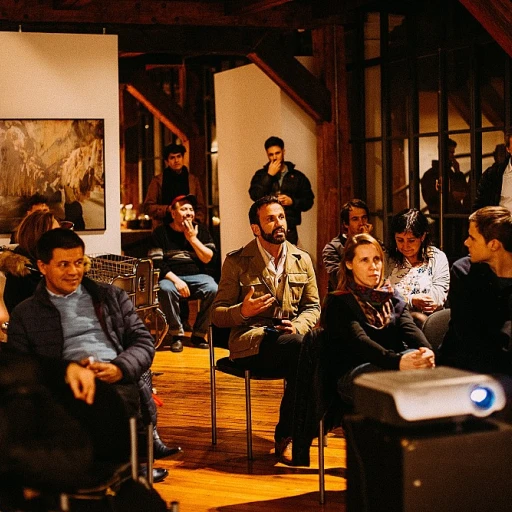
Understanding the Skills Gap
Unveiling the Disconnect Between Education and Industry Demands
The term "skills gap" refers to the growing divide between the skills that students acquire through traditional education systems and the competencies required by today's fast-evolving industries. This gap is particularly evident in STEM fields, where the pace of technological innovation outpaces the speed at which educational curricula can adapt. Skill shortages affect multiple sectors, from information technology to healthcare, highlighting an urgent need for change in how we approach skill development and education.
The disconnect often lies in the outdated curricula and insufficient resources available in physical labs. Educational technology, or EdTech, steps in as a dynamic force that can significantly reduce the distance between learning institutions and industry needs. Bridging this skills gap is pivotal for fostering a new generation of competent professionals across various fields.
Incorporating innovative tools like virtual labs, institutions have the opportunity to revitalize student engagement by allowing students to encounter real-life scenarios through simulations. This aligns effectively with industry standards, providing learners with immersive learning experiences and enabling them to perform complex experiments in a safe, cloud-based environment. The potential of virtual labs can be seen in platforms like Labster, which bring advanced simulations directly to students, no matter their geographic location.
As educators embrace these new technologies, higher education and STEM education, in particular, can witness a transformation in student learning outcomes. Through the integration of educational technology, institutions enhance their ability to offer a learning experience that mirrors the real-world demands faced by budding professionals.
As we delve further into this topic, we will explore the contributions of EdTech in education, highlighting the role of virtual labs as transformative tools for both educators and students, helping redefine the future landscape of education.
The Role of EdTech in Education
The Impact of Educational Technology on Skill Acquisition
Educational technology (EdTech) is revolutionizing the way students learn and acquire new skills. In a rapidly changing world, where the demand for STEM education and experiential learning is growing, EdTech plays a pivotal role in equipping students with the necessary tools and experiences for future success.
One of the most significant contributions of EdTech is the introduction of virtual labs and simulations. These innovative tools are transforming traditional learning experiences, allowing students to engage in experiments that were previously limited to physical labs. Through platforms like Labster and VRLab Academy, learners can access realistic lab environments in real time, enhancing their STEM learning outcomes without the constraints of a physical space.
The rise of cloud-based solutions in education has also made it easier for institutions to implement virtual labs. This technology allows students from diverse geographical locations to participate in immersive learning experiences without the high costs associated with maintaining physical labs. Moreover, it provides greater access to cutting-edge experiments and fosters student engagement through interactive and dynamic learning activities.
Challenges remain, such as ensuring that these digital platforms match the effectiveness of real life lab experiences. However, as EdTech companies continue to innovate, they are closing the gap between digital and physical learning environments, providing valuable insights into bridging the skills gap.
Virtual Labs: A New Frontier in Learning
Exploring the Future of Education: The Impact of Virtual Labs
In the ever-evolving landscape of educational technology, virtual labs stand out as a transformative innovation poised to revolutionize the learning experience for students across the globe. These cloud-based solutions provide an interactive platform that extends beyond the limitations of traditional physical labs, ensuring students gain invaluable hands-on experience in a virtual environment. Virtual labs offer significant advantages in the realm of STEM education, where experimentation and practical applications are critical. Students can perform complex science experiments virtually, replicating real-life scenarios with precision and accuracy. These simulations allow students to immerse in learning experiences tailored to reinforce their understanding and improve educational outcomes. Thanks to the advancements in edtech, virtual labs provide access to a variety of tools and resources that were previously confined to well-funded physical lab facilities. Now, learners from diverse backgrounds have the opportunity to engage actively in immersive learning, enhancing their proficiency in critical subjects through interactive simulations. Virtual labs not only help students to better comprehend lessons by offering real-time feedback and evaluation but also enhance student engagement. By allowing students to visualize concepts through science simulations, virtual labs cultivate an enriched learning environment where curiosity drives discovery. Moreover, platforms like VRLab Academy provide extensive resources that are cloud-based and accessible to higher education institutions, effectively bridging the learning gap and ensuring that students are better equipped for their future careers. Educational technology continues to evolve, and the contributions of virtual labs can't be understated. These innovative solutions are ushering in a new era of learning experiences, empowering students to excel in STEM fields, and equipping them with the requisite skills to excel in a competitive world. Discover more about strategic learning pathways that can further enhance career prospects and skills development.Benefits of Virtual Labs in Skill Development
Advantages of Using Virtual Labs for Skill Acquisition
The use of virtual labs in education, particularly in the realm of STEM, provides numerous advantages over traditional physical labs. They serve as cutting-edge educational technology that significantly enhances student engagement and learning outcomes.
One major benefit of virtual labs is the increased access they offer. They allow students from diverse geographical locations and varied educational backgrounds to engage in interactive learning experiences without the constraints of a physical lab. This democratization of education means more students can participate in essential science and technology studies, fostering a more inclusive learning environment.
Moreover, virtual labs offer real-time simulations that mirror real-life experiments. These simulations provide students with an opportunity to engage in hands-on learning similar to a physical lab, but with the added advantage of being in a safe and controlled environment.
Educational technology companies like Labster and VRLab Academy have been at the forefront of developing immersive learning tools. These tools help students better understand complex scientific concepts by providing them with the freedom to experiment repeatedly, thereby solidifying their knowledge through practice.
Additionally, virtual labs can significantly reduce the cost and logistical challenges associated with maintaining a physical lab. As these virtual tools are often cloud based, they require considerably less infrastructure investment while still delivering high-quality educational experiences.
In essence, virtual labs are revolutionizing the landscape of STEM education. They allow students to engage deeply with content through immersive learning experiences, contributing to improved educational outcomes and helping bridge the skills gap in critical areas of science and technology.












